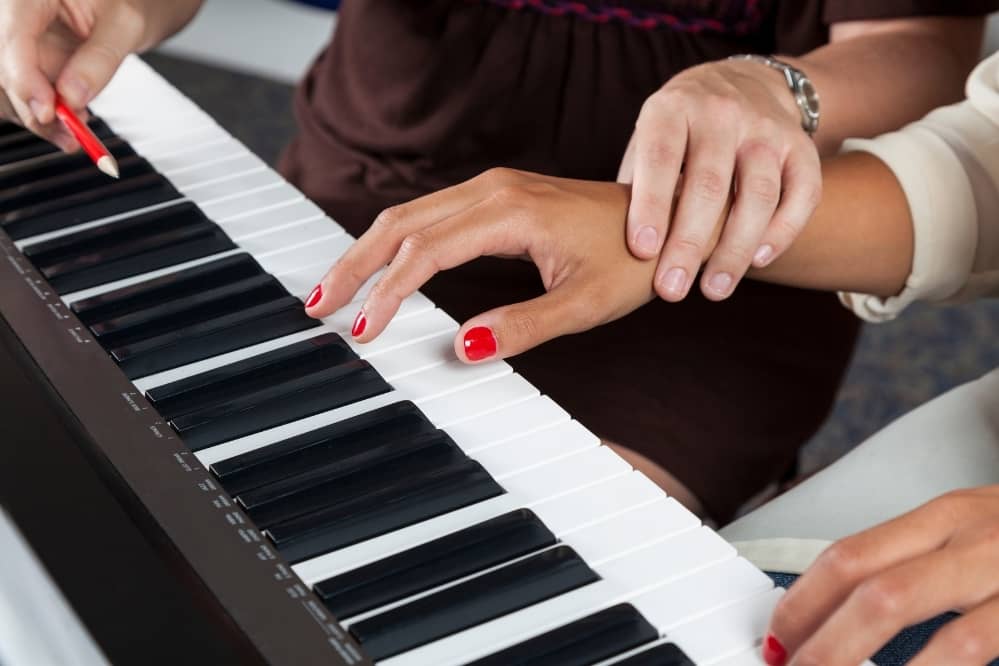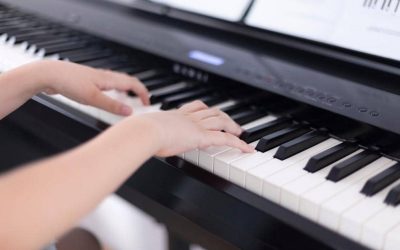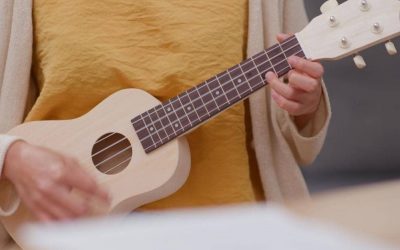Learning to play keyboard with both hands together can be one of the most frustrating and discouraging phase for any beginner. It requires hand, eye and brain coordination to learn to play with both hands.
In this guide, we are going to discuss the easiest way to play keyboard with both hands for beginners. However, before you consider learning to play with both hands, make sure your sight reading skills are up to par. It requires you to distinguish each note on the staff quickly. By improving sight-reading skills, learning to play with both hands will be lot easier for you.
Do not rush
The common mistake beginners make when learning to play keyboard with both hands is trying to play complex pieces before mastering the basics. This is the easiest way to ruin your learning experience. If you become overzealous with playing complex pieces before learning the basics, you will learn bad habits in both hands, making it even more difficult to play two different parts with separate hands.
Take it slow and practice one hand at a time using a metronome, and go at a pace slower than the recommended. Maintain a slower tempo when practicing with both hands.This will take time and a lot of patience.Once you feel like you are making progress with both hands, you can increase the tempo.
Break it up into chunks
Simply pick the first several bars of the song and practice that part with each hand separately. Once you feel comfortable playing it, practice it with both hands until you master them. Ideally, two to four bars are enough for one session. Then pick the number of bars you are comfortable with at the subsequent sessions and practice the chunks until you have it nailed.
Do not worry if your hands get mixed up the first few times. This is normal. As you practice the chunks with your hands together, be sure to continue practicing with each hand separately as well. This strategy tends to be very effective when you practice consistently.
Skipping sessions will interfere with the learning process and may take you back to zero. You can achieve more practicing chunks of a song for just 20 minutes a day.
Start with rhythm
Most keyboards are designed in a manner that right hand and left hand will have different rhythms. You will need to master rhythm before getting to notes.
A standard piece of keyboard music comprises top and bottom lines that have different rhythms. Top lines are referred to as treble clef lines, and are played with right hand while the bottom lines are known as bass clef lines, played with left hand.
Ultimately, the top and bottom lines of music are played at the same time using both hands, but as a beginner, you will have to learn one hand at a time. Just place your keyboard on a flat surface, ideally on your lap and tap out the rhythm on the left side using your left hand. Then, tap out the rhythm on the right side using your right hand. Once you have nailed the rhythm of each hand, try tapping the two parts using both hands.
Understanding how rhythm of each part works will enhance your learning experience.
One strategy that can help you learn faster is while looking at the music on the grand staff, keep your eye on the notes on bass clef and treble clef. Typically, vertical notes on the grand staff will sound at the same time. When notes on the bass clef are in line with those on the treble clef, tap out using both hands at the same time.
Another effective strategy is to write rhythm for both right and left hands just below the staff and count out loud as you tap the rhythm of each hand separately. Do the same thing when you tap with both hands together. Ensure that you know the number of beats you are counting in each measure as well as your key signature. Take your time to learn one measure at a time before proceeding to the next.
Once you have mastered the tapping rhythm of both right side and left side using both hands at the same time, you are ready to move on to the notes.
The Notes
Start by practicing right-hand notes and left-hand notes before trying to put both parts together. Ensure you have mastered each part individually so that you can have it easier when playing both hands together.
It is a good idea to read through your notes verbally before you start playing them on keyboard. Getting the notes right may take time, so you need to take it slow and exercise patience. One of the tricks you can try to accelerate your learning experience is playing left-hand notes while tapping right-hand rhythm. Then switch and play the right-hand notes while tapping left-hand rhythm.
Also, you can sing right-hand notes while playing left-hand part then switch and sing left-hand notes while playing right-hand rhythm.
Tip: Be keen to note where rhythmic and note patterns change as this will help you play different groups together smoothly and with ease.
Finally
Above all, BE PATIENT! Playing keyboard with both hands as a beginner does not happen overnight. Persistence will get you there no matter how hard it seems at first.So give yourself time and keep practicing every single day.Most importantly, RELAX! You will learn better when you are not stressing out about playing with both hands. Clear your mind and let it flow.






